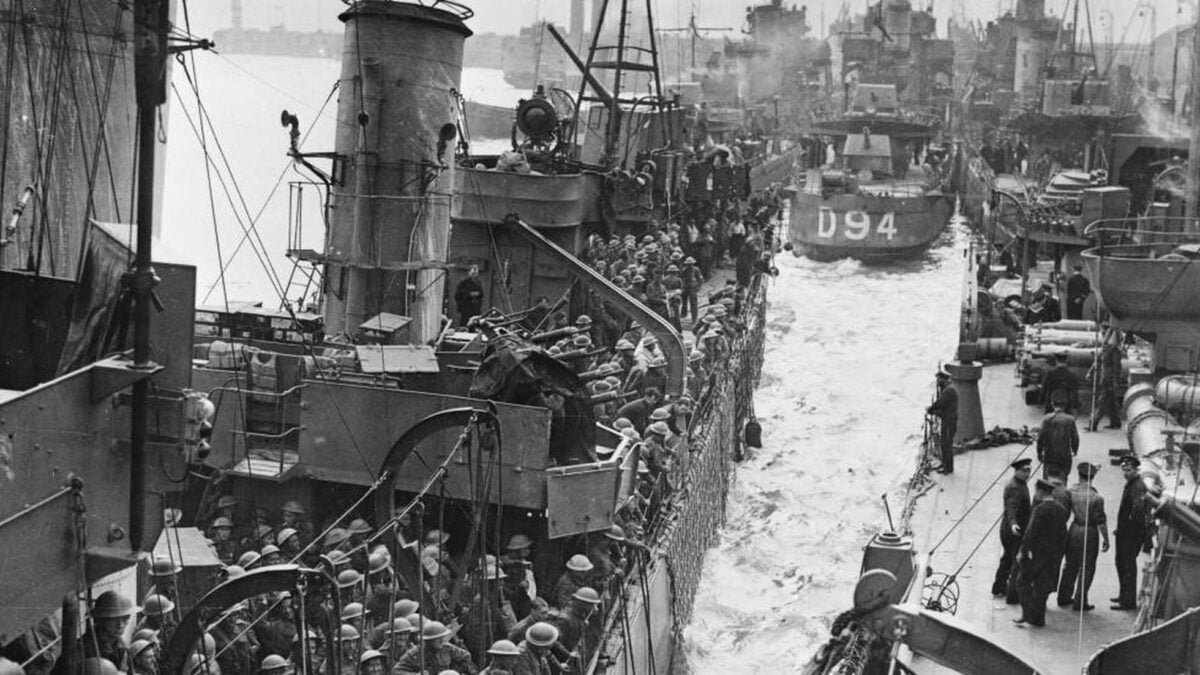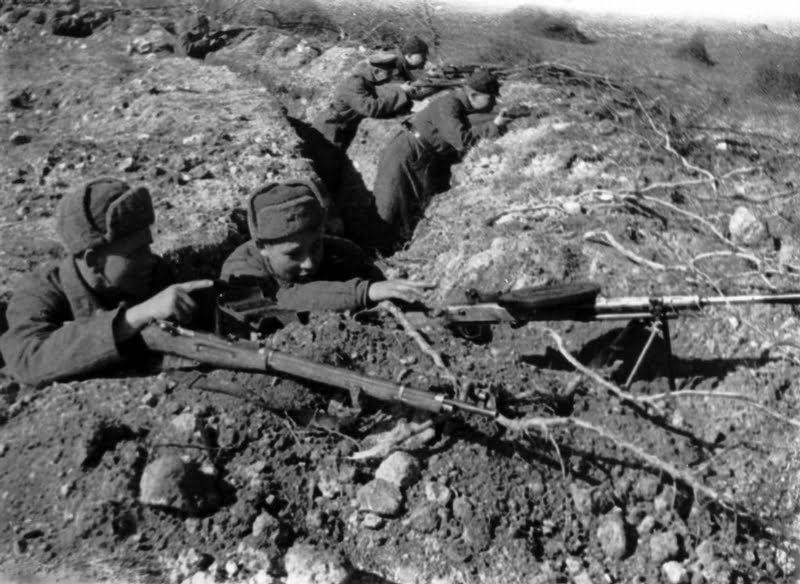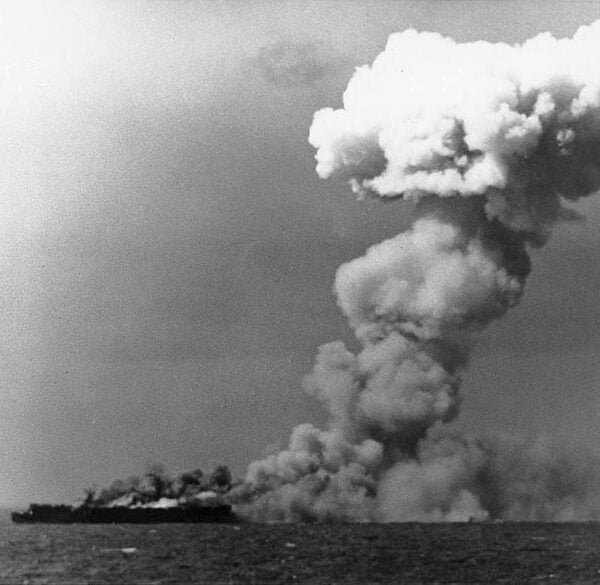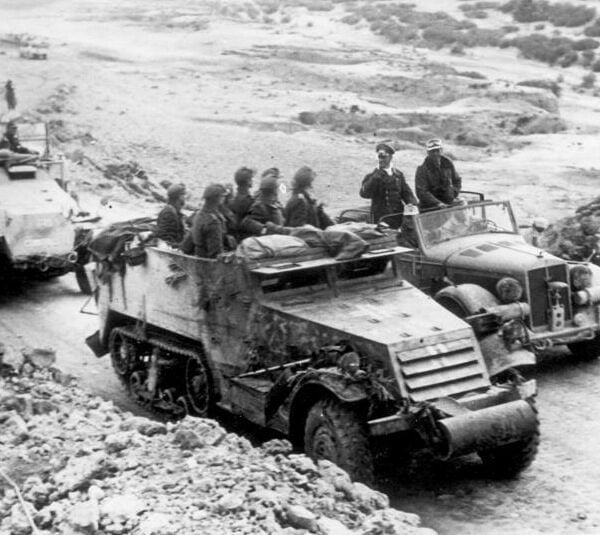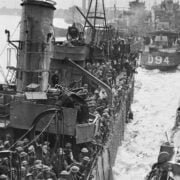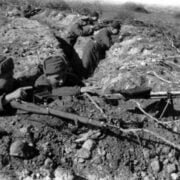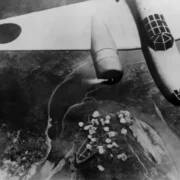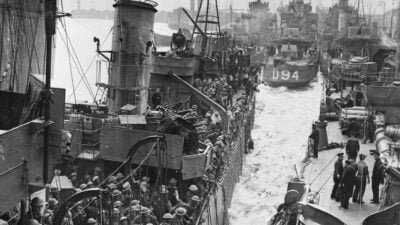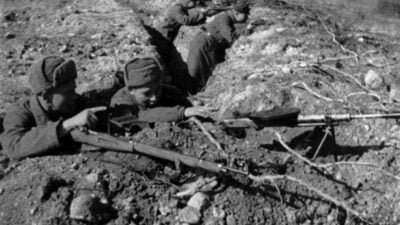The capture of Monte Castello during World War II is a crucial and thrilling chapter in military history. In this article, we will explore the events that led to this intense battle, highlighting strategies, leaders, and the circumstances that made this episode a turning point on the Italian front.
Also check out: What was the Brazilian Expeditionary Force (FEB)
Historical and Geographical Context of the Capture of Monte Castello
The saga is intertwined with the intricate fabric of World War II, with the Emilia-Romagna region in Italy playing a central role. During the turbulent years of the war, the rugged geography of the area posed significant challenges for both Allied forces and German troops.
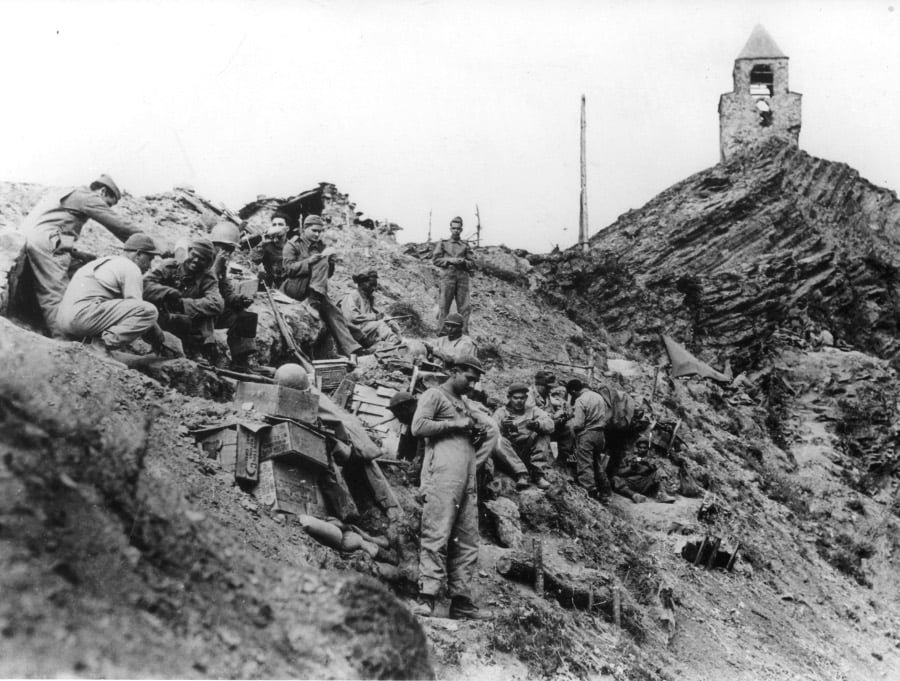

The Strategic Location of Monte Castello
Majestically rising in the Italian landscape, Monte Castello controlled crucial thoroughfares. Its strategic position offered significant advantages to whoever held it, making it a key piece on the military chessboard. This elevated point dominated the surrounding landscape, providing strategic visibility and control over troop movements in the region.
Italy, one of the theaters of operations during World War II, witnessed the complexity of alliances and rapid shifts in loyalties. From an Axis ally to a nation occupied by the Allies, Italy was the stage for intense conflicts. Monte Castello, situated in this volatile context, became a focal point, symbolizing the struggle for supremacy in the region.
The geography of Emilia-Romagna presented a series of challenges for military strategists. Steep hills, deep valleys, and dense vegetation created a terrain conducive to ambushes and guerrilla confrontations.
Strategic Importance for Both Parties
For both the Allies and the German forces, Monte Castello represented more than a strategic hill. It was a symbol of resistance, a key point that could tilt the balance in favor of whoever controlled it. This paragraph emphasizes the perceived importance of this location, not only in tactical terms but also as a crucial psychological element in the narrative of the Italian battle.
As battles on the Italian front unfolded, Monte Castello emerged as a point of intense conflict. The narrative of this chapter explores the evolving dynamics of military operations in the region, revealing how the battle became a strategic goal amid a series of confrontations and strategic movements.
Strategies and Preparations for the Capture of Monte Castello
Before the crucial assault on Monte Castello, the Allied forces meticulously planned strategies and executed complex preparations to ensure the operation’s success. This chapter sheds light on the intricate tactics employed and the concerted efforts that preceded the decisive confrontation.
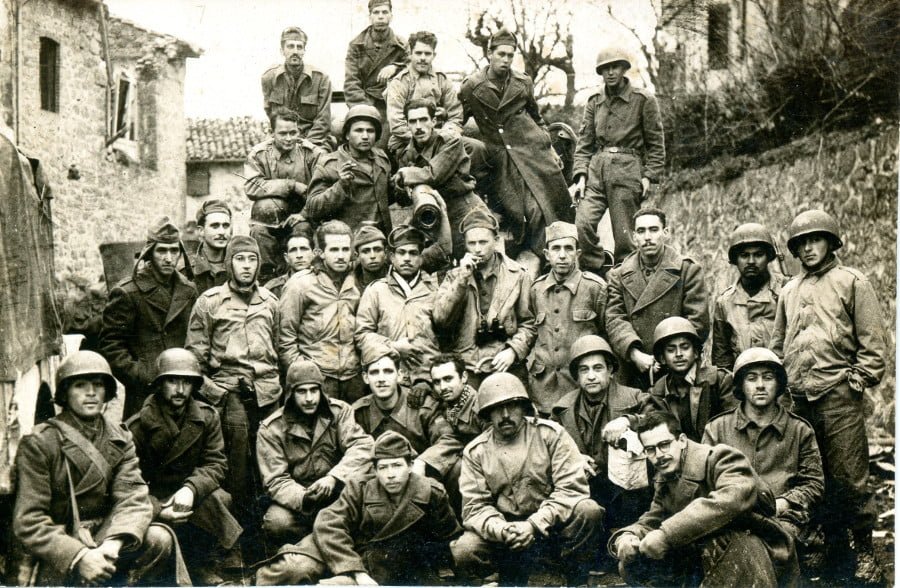

Meticulous planning was the backbone of the Allied forces’ strategy. High-ranking generals, including the experienced General Mark W. Clark, led strategic sessions where every detail of the operation was thoroughly discussed. The choice of siege strategies, the role of specific units, and coordination between different military branches were carefully considered to maximize the chances of success.
Success also depended on the involvement of specialized units. This section will highlight how specific divisions, such as paratroopers and engineering units, played crucial roles in executing the overall strategy. The specialization of these units allowed for a multifaceted approach, addressing specific challenges that would arise during the operation.
Reconnaissance and Intelligence
Before the decisive advance, effective reconnaissance and information gathering were imperative. We will explore how the Allied forces employed aerial reconnaissance, ground patrols, and intelligence obtained from various sources to gain a comprehensive understanding of the terrain, enemy positions, and weather conditions. This critical data informed tactical decisions during the battle.
Effective communication between units was vital for coordination during the operation. We will highlight the communication strategies implemented, from the use of radio to ground messengers, to ensure smooth transmission of orders and information between different contingents. The resilience of these communication systems played a crucial role in the most intense phases of the battle.
Simulations and Training
Before the actual confrontation, troops underwent simulations and intensive training to prepare for the specific conditions of Monte Castello. This paragraph will address how soldiers were exposed to simulated scenarios, allowing them to familiarize themselves with the challenging terrain and practice planned tactics. Meticulous training was essential to ensure precise and coordinated execution during the actual battle.
The section on strategies and preparations provides an in-depth view of the careful planning that preceded the capture of Monte Castello. As Allied troops prepared for the final assault, each element of this strategic preparation played a crucial role in determining the outcome of this historic battle.
Notable Leaders and Their Contributions
The capture of Monte Castello was marked by exceptional leadership, with notable figures playing crucial roles in formulating strategies and executing the operation. This chapter highlights prominent leaders and their distinct contributions to the success of the endeavor.
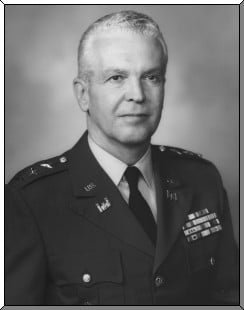

General Mark W. Clark: Fearless Strategist
At the heart of operations was General Mark W. Clark, a respected figure and fearless strategist. Clark, known for his bold vision, played a crucial role in articulating and overseeing the implementation of plans that led to victory at Monte Castello.
Brigadier General William C. Gribble: Exemplary Coordination
Efficient coordination between units is often attributed to Brigadier General William C. Gribble. Gribble played a central role in ensuring that each component of the strategy was executed in a coordinated and effective manner, contributing to the overall success of the operation.
Participation of the Brazilian Expeditionary Force in the Capture of Monte Castello
The presence of the Brazilian Expeditionary Force (FEB) is a distinct and significant chapter, highlighting Brazil’s contribution to the Allied military effort during World War II.
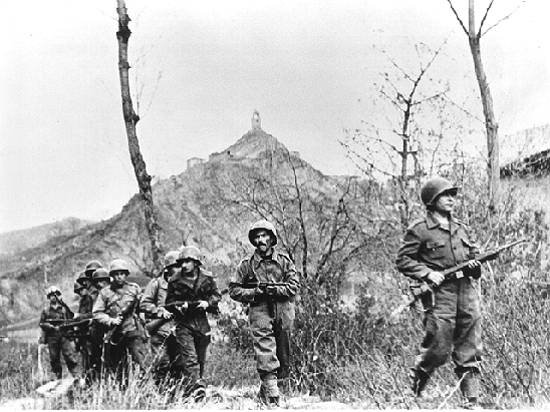

Brazil’s Commitment on the Italian Front
This paragraph contextualizes Brazil’s commitment on the Italian Front, highlighting the Brazilian government’s decision to send troops to fight alongside the Allied forces. The formation of the Brazilian Expeditionary Force and its arrival in Italy solidified Brazil’s active role in the global conflict.
Exploration of how the FEB integrated into coordinated strategies and operations with the Allied forces, playing a vital role in tactical discussions and collaboration with other military contingents.
Action in the Battle of the Capture of Monte Castello
This paragraph will detail the effective participation of the FEB during the Battle of Monte Castello. It will address the units involved, their strategic positions, and the specific challenges they faced in the rugged terrain. The courage and skill of the Brazilian troops will be emphasized, highlighting crucial moments that directly influenced the course of the battle.
Consideration of the logistical challenges faced by the FEB, from the supply of resources to overcoming adverse weather conditions.
Brazil’s contribution will be recognized and celebrated, both within global military history and the national memory of Brazil. Tributes and public recognition of the Brazilian troops for their valiant performance in this battle are an integral part of the legacy that remains alive to this day.
Field Officers and Unit Commanders
In addition to high-ranking leaders, field officers and unit commanders played crucial roles at tactical levels. Their quick decisions and adaptability to evolving conditions were determining factors for success in specific scenarios during the assault.
The effectiveness of leadership was not limited to the military realm but extended to interagency coordination. Allied leaders collaborated with intelligence units, special forces, and other military branches to optimize the use of resources and information. The synergy between these entities was a fundamental aspect of the overall success of the operation.
Adaptation to Unexpected Challenges
Notable leaders stand out not only for following pre-established plans but also for their ability to adapt to unexpected challenges. Leaders excelled in unforeseen situations, adjusting strategies and maintaining troop cohesion even in the face of adversity, contributing significantly to the positive outcome of the capture of Monte Castello.
Development of the Operation to Capture Monte Castello
The development of the battle was a dynamic spectacle that unfolded in various phases, each marked by intense clashes and constantly evolving strategies.
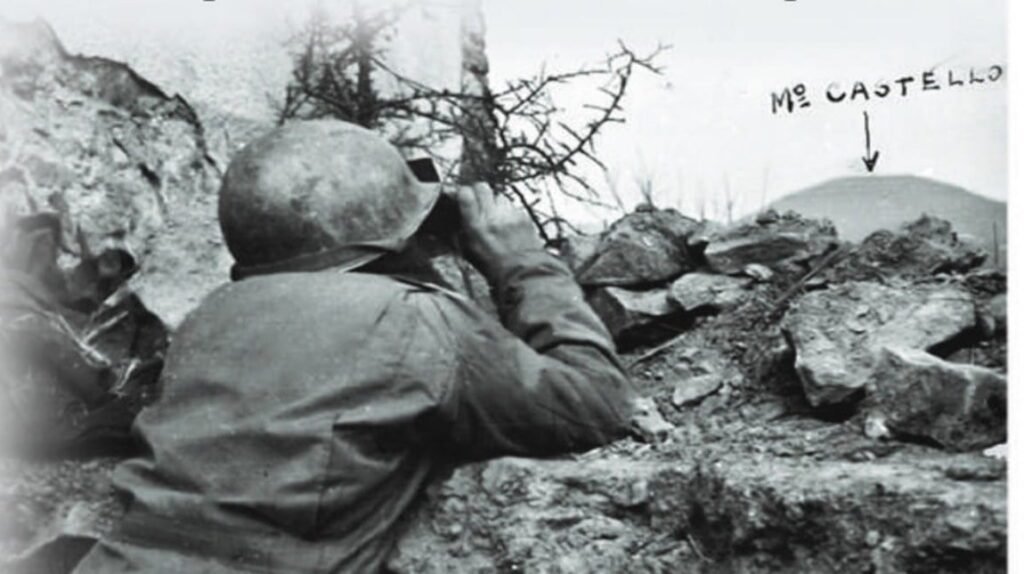

Early Advances and German Resistance
The early stages of the battle saw bold advances by Allied troops, who encountered tenacious resistance from German forces. This paragraph will explore the initial confrontations, highlighting the difficulties faced by Allied soldiers in trying to gain ground on the steep slopes and in the villages surrounding Monte Castello.
The battle’s dynamics included crucial moments of strategic withdrawals and surprise counterattacks. Strategic withdrawals were often followed by calculated counterattacks, demonstrating a tactical fluidity that characterized the struggle at Monte Castello.
Weather Conditions and Additional Challenges
Adverse weather conditions played a crucial role in the battle’s development. Factors such as inclement weather, including snow and freezing temperatures, presented additional challenges for troops on both sides. Adapting to these unpredictable conditions became an integral part of the battle’s narrative.
The battle around Monte Castello also involved conflicts in urban settings and guerrilla confrontations in the surrounding villages. Troops engaged in intense street fighting, facing unique challenges presented by the topography and civilian presence. The ability to adapt to these distinct scenarios became crucial for the operation’s progress.
Changes in Front Lines
The development of the battle was marked by dynamic changes in front lines. This paragraph will explore how the Allied forces, through cunning maneuvers and innovative tactics, managed to alter the balance of power at Monte Castello. The strategic flexibility demonstrated by commanders was crucial to securing significant gains in different phases of the battle.
By understanding the fluid development of the battle for Monte Castello, we gain a deeper appreciation for the complexity and intensity of this military operation.
Logistical and Climatic Challenges in the Capture of Monte Castello
The battle was exacerbated by a series of logistical and climatic challenges that tested the resilience and adaptability of the Allied forces.


Challenging Terrain and Limited Supplies
The rugged terrain around Monte Castello presented significant logistical challenges. Narrow and steep roads made the transport of vital supplies difficult. The lack of proper access routes made the delivery of ammunition, food, and equipment a constant challenge, directly impacting the effectiveness of military operations.
Adverse weather conditions played a crucial role in the battle. Abundant snow, freezing temperatures, and unpredictable weather conditions affected troop mobility and equipment operation. Combat logistics were compromised, requiring adaptive strategies to cope with the rigors of the Italian winter.
Vehicle Supply and Maintenance
Vehicle maintenance, such as tanks and transport vehicles, faced significant challenges due to difficult terrain and adverse weather conditions. Extraordinary efforts were made by maintenance teams to ensure that vehicles remained operational. The scarcity of spare parts and the corrosive impact of mud and snow added an additional layer of logistical complexity.
Faced with logistical difficulties on the ground, the Allied forces resorted to airborne supply strategies to ensure a constant flow of resources. The use of aircraft for supply drops became vital. The precision and effectiveness of this innovative approach contributed significantly to mitigating the logistical challenges faced on the ground.
Logistical and climatic challenges not only tested the technical capabilities of the forces but also influenced the morale and spirit of the troops. Overcoming these challenges strengthened the teamwork and determination of the Allied forces. The resilience demonstrated in the face of logistical and climatic adversities became an integral part of the narrative of the capture of Monte Castello.
Consequences and Strategic Impact
The victory in capturing Monte Castello was not just a local military triumph but had significant repercussions in terms of strategy and geopolitics on the Italian front during World War II.
Opening New Advance Lines
The conquest of Monte Castello opened new advance lines for the Allied forces on the Italian front. Strategic control of the region allowed the expansion of operations, enabling coordinated advances toward other crucial points. The capture of Monte Castello was not just a territorial victory but a strategic opening that influenced the dynamics of the theater of operations.
The impact of the capture of Monte Castello extended beyond geographic borders. The victory exerted additional pressure on German forces, forcing them to reassess their defensive strategies in the region. The conquest of a key strategic point compromised German supply lines and communications, weakening resistance in adjacent areas.
Success in Monte Castello had a significant impact on the morale of Allied troops. Overcoming logistical and climatic challenges, coupled with the capture of a vital strategic point, strengthened the confidence and determination of the troops. This victory not only boosted immediate morale but also had lasting effects, energizing the Allied forces for future operations.
Influence on Campaign Strategies
The capture of Monte Castello directly influenced campaign strategies on the Italian front. Lessons learned during this operation were incorporated into subsequent strategies. The experience gained in terms of interagency coordination, confronting logistical challenges, and tactical adaptation shaped the future approaches of Allied forces in the region.
The strategic impact of Monte Castello extended beyond World War II. The victory in this battle contributed to the outcome of the war on the Italian front. By weakening German positions and creating opportunities for additional advances, Monte Castello played a vital role in the broader context of the Allied victory in Europe.
Legacy and Recognition of the Capture of Monte Castello
The operation transcends the battlefield, echoing through the pages of military history and being revered as a remarkable episode of World War II.


Tributes to the Fighters
Monuments, memorials, and remembrance ceremonies perpetuate the memory of the courage and sacrifice of those who fought on the challenging slopes and frozen villages of the region. Official recognition and public gratitude continue to be expressed by nations and communities, ensuring that the legacy of these heroes is preserved.
The legacy of the battle also manifests in the ongoing influence on modern military strategies. The tactics and lessons learned at Monte Castello are studied and incorporated into contemporary military doctrines. Adaptability to adverse conditions, effective coordination, and tactical flexibility remain valued aspects in current conflict contexts.
The assault on Monte Castello has also found its place in popular culture. The battle is portrayed in books, movies, and other forms of media. Gripping narratives based on real events help preserve the memory of the battle, making it accessible to wider audiences and ensuring that stories of courage and tenacity are passed on to future generations.
Impact of the Capture of Monte Castello on Historical Narrative
The impact of the capture of Monte Castello extends to the global historical narrative. The battle is contextualized in historical studies and military analyses, contributing to a broader understanding of World War II. Ongoing analysis of this specific episode influences how we understand not only the battle itself but also the events surrounding it.
Monte Castello also serves as a reflection on the complexity of war and the realities faced by those who wage it. The logistical, climatic, and tactical challenges faced by fighters at Monte Castello offer valuable insights into the unpredictable and multifaceted nature of armed conflict.

